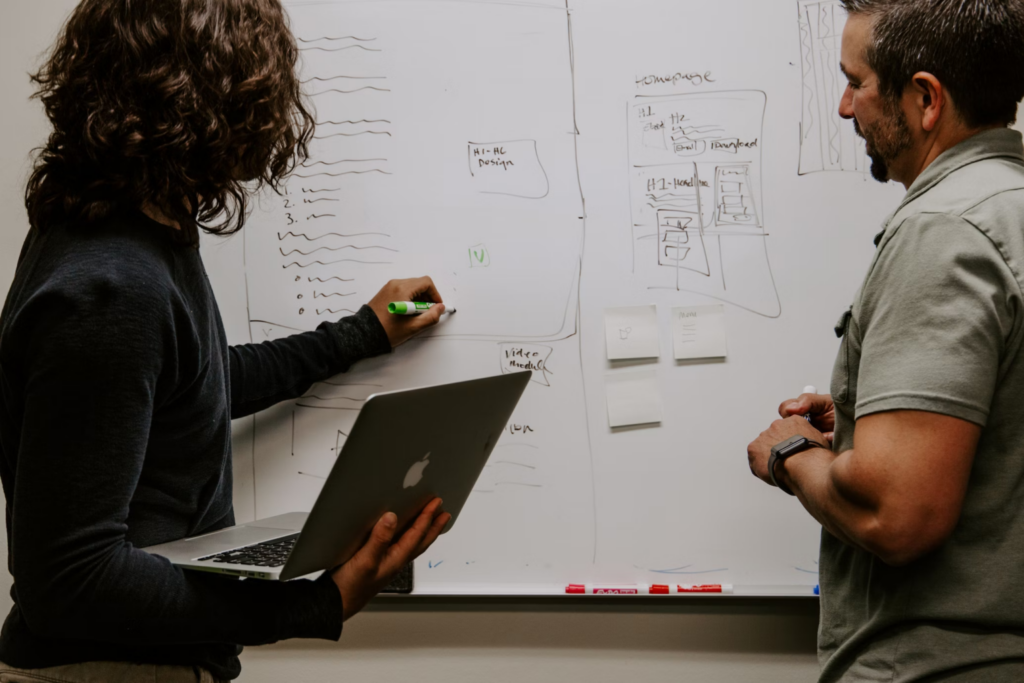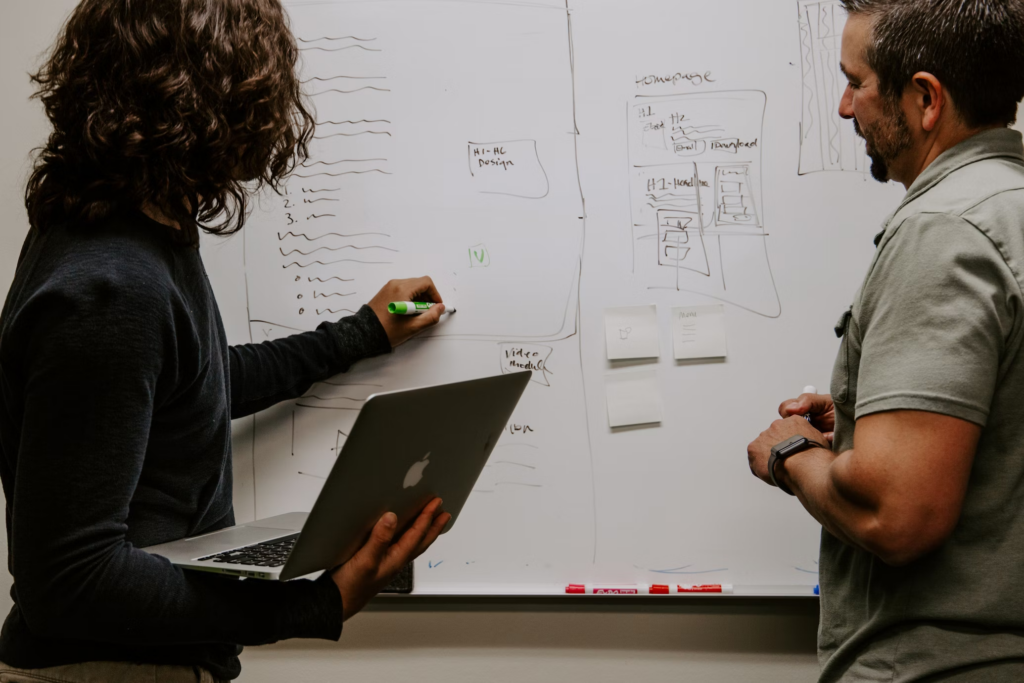Have you ever wondered what we base our decisions on? In many cases, and specifically in the world of work, cognitive biases at work mean that we are not completely objective when we act.
We would all like to believe that our actions are always based on data or purely objective criteria. However, there is more than one variable that can affect how we process information and thus interfere with the decisions we make. Within these variables are everything we feel, think, previous experiences, beliefs, and more; these influence how we view reality.
The set of these variables and how they affect us is known as “cognitive biases”, and they are those patterns of deviation from objectivity, i.e., distortions in our individual perception of reality. Cognitive biases can arise due to different factors, such as previous experience, information present in the immediate context, or even emotions, and are present in more situations than we would like to accept.
The world of work, therefore, is not exempt from being affected by such distortions. It is, therefore, essential to know and understand cognitive biases at work in order to learn to recognise them so that the quality of strategic and operational decisions in companies is not compromised.

For example, decision-making affected by cognitive biases can lead to inaccurate assessments of situations by HR departments, failures in selection processes, inefficient allocation of resources, and, ultimately, failure to achieve the expected results. Therefore, understanding and managing cognitive biases is crucial to improving important processes such as recruitment and decision-making and ensuring the long-term success of organisations.
But how can we overcome these barriers to make better decisions for our companies? Read on, and we will explain it to you!
Step one: knowing what we are up against
The concept of cognitive biases was introduced in 1972 by psychologists Daniel Kahneman and Amos Tversky, specialists in the field of human decision-making. These are defined as those errors in the interpretation of reality that impact our decision-making process.
Cognitive biases are caused by our brain’s strategies to simplify information processing, using shortcuts, emotional motivations, memories, or social influences. This is because, although our brain is a very agile tool, it must constantly process information and make decisions based on the data at hand, and cognitive biases are those simplifications based on certain rules that help to give meaning to what surrounds us.
For this reason, far from being considered pathological, cognitive biases are automatic and involuntary processes that we carry out at the brain level to make sense of our experiences and thus be able to decide relatively quickly.
The problem lies when these “errors” are based on prejudices or stereotypes, which can determine the level of importance or resources assigned to certain processes. This can cause us to make the wrong decisions or unintentionally harm another person.

Cognitive biases at work: Which are the most common?
Research in organisational psychology has identified multiple types of cognitive biases at work, related to different areas, such as recruitment processes, business decision-making, sales, etc. In fact, within Human Resources Trends, it is increasingly common to find that concepts coming from psychology are taken into account to improve internal processes in companies.
The importance lies in the fact that many of these biases are capable of determining different dynamics within companies, causing decisions to be made based on “intuition” rather than on data or objective information. This is why it is so necessary to know what types of cognitive biases may be present in order to take action to address them.
The most common types of cognitive biases at work include:
| Types of cognitive biases at work | ||
| 1. | Biases affecting decision-making | Confirmation bias |
| Availability bias | ||
| 2. | Team management biases | Affinity bias |
| Halo effect | ||
| 3. | Innovation biases | Fear of risk and loss |
1. Cognitive biases affecting business decision-making:
- Confirmation bias: This is the need we have to confirm our existing beliefs. The problem is that this can affect how we evaluate options and make decisions. In the business environment, this can lead to selectively seeking out information that supports decisions already made and ignoring opinions that contradict one’s own, limiting the ability to adapt to changing environments or to innovate.
For example: If I have high expectations for a soon-to-be-released product, I will consider the opinions of people who support my decision rather than those who believe that “the time is not right” or that my product still needs work”. This bias may cause me to decide to bring the product to market as soon as possible without considering the reasons that contradict that decision.
- Availability bias: Decisions are often affected by the readily available information, which in many cases are recollections of isolated facts rather than the most relevant or objective information present. This can lead to suboptimal decisions in areas such as resource allocation or strategic planning.
For example: In a technology company, the team considers using a new, more efficient tool. Although there is a lot of evidence that it works well, the team leader recalls a problem they had with a similar platform in the past. Although that was only an isolated bad experience, among many good ones, their negative recollection influences the team’s decision, ignoring the positive evidence and missing the opportunity to improve. In this case, the easier-to-remember information affected the choice.
2. Biases in team selection or management:
- Affinity bias: This is a preference for those who share similarities with us. This can lead to the formation of homogenous teams, limiting diversity of thought and perspective and negatively affecting creativity and problem-solving.
For example: as a team manager, I will assign more responsibility or the most important tasks to team members who are of the same nationality as me. In such cases, it is best to apply a DEI strategy.
- Halo effect: This is the tendency to generalise a person’s evaluation based on a positive characteristic. This cognitive bias at work can influence decisions about promotions, project assignments, and performance appraisals, creating imbalances in the team.
For example: the team member who always says “good morning” at work is put in charge of the best projects because if they are polite, then they must be very responsible and will do the job well.

3. Innovation biases:
- Fear of risk and loss: These cognitive biases at work can hinder a company’s willingness to take the risks necessary for innovation. Resistance to change can limit the ability to adapt to dynamic business environments.
For example: In a company where the idea of expanding into new international markets is being considered, even though the market seems receptive and there is potential for a large return on investment, the CFO vividly recalls a previous experience in which the company took a similar risk and suffered temporary financial losses. Their fear of risk leads them to strongly oppose the new proposal, opting for a less risky but also less innovative option.
- Anchoring bias: This type of cognitive bias at work occurs when initial benchmarks are established, which may influence the evaluation of new ideas in the future. This can limit the adoption of innovations that do not fit with pre-existing ideas.
For example: The budget for an advertising campaign is being discussed. The manager initially proposes a considerably high budget based on the previous year’s expenditure, even though market circumstances have changed. Although other team members suggest adjustments more in line with the current situation, the team eventually settles on a budget close to the anchor suggested by the manager, underestimating the need to adapt to new market conditions. The anchoring bias here is seen in the strong influence that the first figure mentioned above had on subsequent decision-making.
Join the global leading solution in mental well-being
How do we reduce cognitive biases at work?
Now that we know what the most common cognitive biases are in the business world, the first step in dealing with them is to become aware of them and recognise them on a day-to-day basis.
We need to remember that the process of questioning our own perception is not always easy, so we need to practice to make it easier and easier for us to perfect our decision-making process. Here are some methods that you can start to implement that will help you in the process:
The three-option approach
It consists of always having at least three alternatives for each important decision to be taken. Once you have defined the three possible options, analyse each of them through the following questions:
- What are the advantages of this decision?
- What are the disadvantages of this decision?
- What will be the consequences of taking this path?
- If this decision is not right, what actions could we take to solve it? What resources are available to me in case things go wrong?
By analysing all alternatives through this process, you will be able to make decisions more objectively and informally, preventing cognitive biases at work from clouding your decision-making process. This method is especially useful when tackling anchoring and availability biases.
Understanding failure as part of the process
The fear of failure often leads us to persist in projects that no longer prosper instead of giving up, arguing that we do not want to waste the effort already invested. How can we overcome this obstacle? By recognising that failures do not define our entrepreneurial identity, and although our project may have had flaws, this does not imply that the whole enterprise does not work.
By understanding failure as a possible option in every project we work on, we face it, assume the risks from the outset, and take preventive action or plan actions that can counteract the damage. Taking on failures is the only way to keep moving forward and learning from them in order to avoid committing them again in the future.
In the face of failure, the best thing to do is to reflect and assess where there is room for improvement and work on them. Identify and document lessons learned and practice this exercise constantly to help you overcome the fear of failure.
Rely on other opinions
All successful companies rely on their employees’ teamwork day in and day out. For this reason, during decision-making processes, external opinions from peers, experts, leaders, customers, etc., can help reduce cognitive biases at work and allow for debate until the best alternative is chosen. This, in turn, improves teamwork processes and strengthens internal communication in the company.
When you open up the option of listening to external opinions, you can address questions that we sometimes avoid asking ourselves, such as:
- What are the weaknesses in my idea?
- What are the possible consequences of my decisions?
- What risks might arise?
- What are the strengths of my competitors?
However, it is also important when analysing the responses and opinions of others to remember to be aware of the threat of confirmation bias. To do this, avoid limiting yourself to accepting only those answers that reinforce your preferences and do not undervalue opinions that may contradict your own ideas.

Trust the leaders in mental well-being
At ifeel, we know that recognising and addressing cognitive biases at work is essential to improve decision-making, foster diversity, and encourage innovation. To take things to the next level, consider implementing a management tool to improve the implementation and monitoring of development projects.
That’s why our team of expert workplace well-being psychologists has created a mental well-being solution for businesses that brings significant benefits to the entire team, including HR managers.
We know that leaders are key in influencing the company’s final results. That’s why, through our solution, they can receive personalised, data-driven advice on improving the psychological well-being of the teams they are responsible for. Are you part of the HR department in your organisation? Try our programme now to see how it could help you.
In addition, this programme offers all employees a complete mental health care service that they can access in different ways depending on their needs: those who wish can access an online therapy service with one of our psychologists, specialised in cases like theirs, or interact with one of our professionals to receive emotional support in a more specific circumstance that worries them.
We hope you found this post about cognitive biases interesting, and we encourage you to learn more about Employee Resource Groups here. If you would like more information about our mental well-being solution for companies, simply request it, and we will contact your team as soon as possible.









